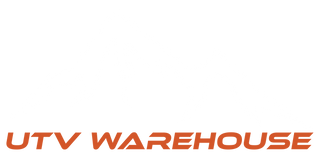Track System Maintenance
Proper track system maintenance ensures your vehicle’s performance, durability, and safety on any terrain. Regular inspections, cleaning, and lubrication protect critical components from wear and reduce the risk of costly downtime. Follow these ten maintenance phases to keep your system in peak operating condition.
-
Safety Precautions
Always ensure your vehicle and track system are secure and powered down before any service begins.- Shut off the engine and engage the brake before starting any work.
- Keep hands, feet, and loose clothing away from moving parts.
- Make sure the vehicle is stable and secure before performing maintenance.
- Always wear appropriate protective gear when handling parts.
-
Maintenance Responsibility
Consistent care is essential to keeping your Track System performing safely and efficiently.- Perform regular inspections, lubrication, and adjustments.
- Follow the manufacturer’s maintenance schedule and guidelines.
- Record completed maintenance in a service log.
- The operator is accountable for maintaining the system correctly.
-
Service Intervals and Durability
Your maintenance timing should match how and where you use your Track Systems.- Increase service frequency under heavy or harsh conditions.
- Regular evaluation ensures reliability and performance.
- Adjust recommended intervals based on inspection results.
- Routine maintenance extends the lifespan of your equipment.
-
Cleaning and Handling
Proper cleaning prevents contamination and premature wear of components.- Avoid concentrated water pressure on seals or bearings.
- Clean rubber parts, caps, and seals carefully.
- Do not use chemicals or solvents that damage materials.
- Allow all cleaned parts to dry completely before reassembly.
-
Component Checks and Replacements
Inspect every component carefully for damage or signs of wear before reusing.- Examine bearings, stabilizers, and fasteners for defects.
- Replace any cracked or deformed rubber or metal parts.
- Always use new bolts and washers when reinstalling components.
- Add 8–10 cc of 80w90 oil into the hub housing through the oil port.
-
Maintenance Tasks Overview
Regular maintenance involves inspecting, cleaning, adjusting, lubricating, and replacing components as needed.- Inspect all critical parts for cracks, corrosion, or loose fittings.
- Remove all dirt and buildup from exposed surfaces.
- Adjust torque, alignment, and tension per guidelines.
- Lubricate all moving parts according to service recommendations.
-
System-Level Maintenance
A full system inspection checks all structural and functional elements for safe operation.- Look for visible cracks, misalignment, or unusual damage.
- Confirm correct attack angle and vehicle alignment.
- Verify torque values for all structural bolts and fittings.
- Replace any damaged or bent brackets immediately.
-
Wheel and Bearing Servicing
Regular wheel and bearing checks reduce resistance and prevent costly failures.- Inspect every wheel for uneven wear and cracks.
- Replace bearings that grind, stick, or produce noise.
- Clean seals and apply fresh lubricant to maintain sealing.
- Ensure smooth and consistent wheel rotation.
-
Track, Frame, and Sprocket Inspection
Comprehensive inspection keeps all major driving components in balance.- Check tension, surface wear, and track alignment.
- Replace worn track guides, stabilizer cones, or deformed parts.
- Clean and lubricate hub seals to maintain bearing health.
- Replace sprockets showing worn or sharpened teeth.
-
Lubrication and Longevity
Regular lubrication ensures your Track System operates smoothly and reliably over time.- Apply approved grease or oil to all lubrication points.
- Clean fittings before adding new lubricant.
- Keep seals and bearings properly greased to avoid wear.
- Maintain consistent lubrication schedules for long-term durability.
